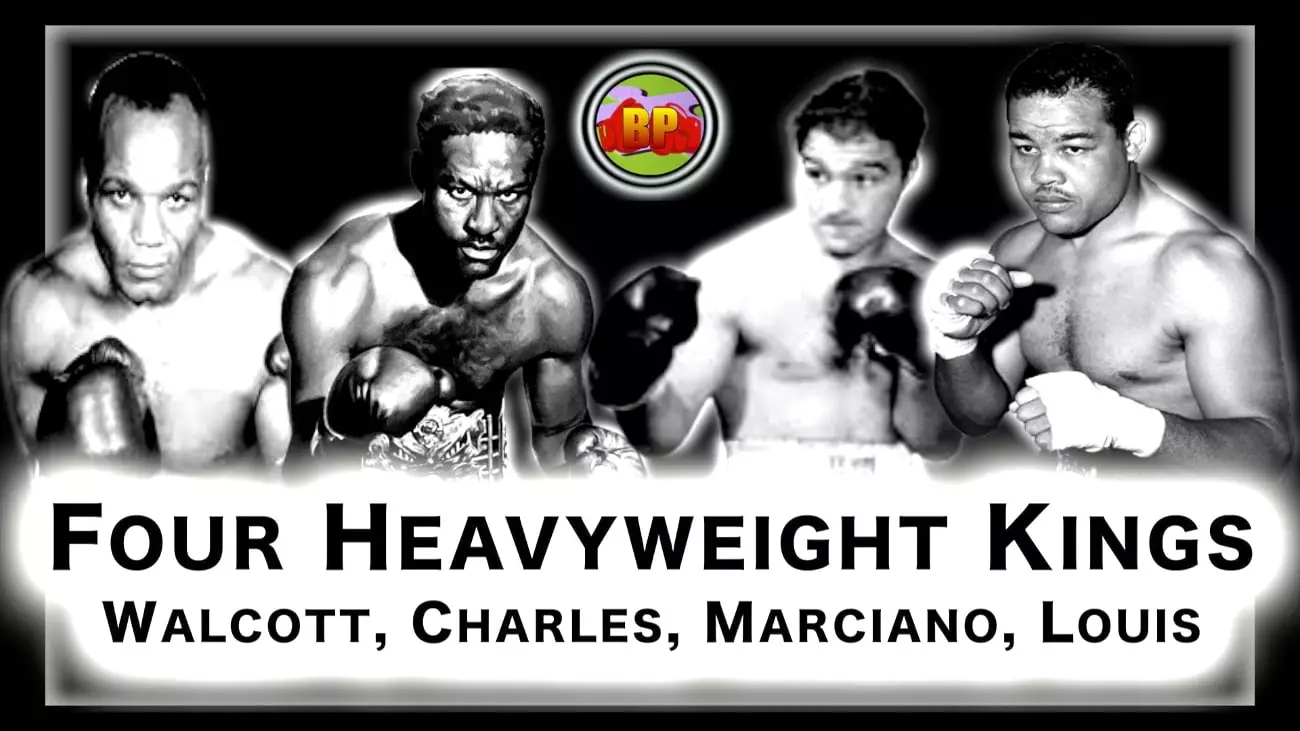The history of heavyweight boxing encapsulates not just the athletic prowess of the fighters, but also the dramatic narratives woven through their rivalries. From 1947 to 1954, the heavyweight division was dominated by four notable figures: Jersey Joe Walcott, Ezzard Charles, Rocky Marciano, and Joe Louis. Each of these legends not only fought each other but also shaped the landscape of boxing during an era that many have dubbed the “Black & White Age.” This article seeks to analyze their intertwined careers, the monumental bouts that underscored their greatness, and the implications these rivalries held for the sport.
The Birth of a Rivalry: Louis vs. Walcott
In 1947, Joe Louis, a champion in the ring and a revered figure in American sports, faced off against Jersey Joe Walcott at Madison Square Garden. This match is widely regarded as one of the greatest upsets in boxing history. Walcott’s strategic finesse and resilience challenged Louis’s dominance, leading to an exhilarating encounter that would change perceptions of both fighters. When they rematched a year later, the outcome reinforced not just Walcott’s caliber but also the unpredictability of boxing as a sport.
Walcott’s ascendancy opened doors for new talent in what had previously been a champion-centric narrative, where Louis had been an unchallenged figure. This transition marked the beginning of a multi-faceted rivalry that would encapsulate the essence of the heavyweight division during this period.
Following Louis’s retirement, the heavyweight landscape was ripe for competition. In 1949, Ezzard Charles fought Walcott to determine who would take the mantle left by Louis. Their contest didn’t just signify a coronation of a new champion; it illustrated the shift in boxing dynamics. With Louis’s looming shadow now gone, the fight underscored how contenders who may have once hidden in the shadows began to emerge.
Charles claimed victory that day, marking a pivotal moment that would lead to further thrilling encounters in the division. Louis’s return in 1950 to challenge Charles marked a symbolic clash between old and new. The fight showcased the nuances in both fighters, revealing Joe Louis’s tenacity but also exposing his vulnerabilities against the evolving caliber of competition.
The years 1951 and 1952 proved to be significant for these boxers, particularly as the attention turned towards a series of bouts that reflected their collective and individual growth. In 1951, Louis and Charles faced off again, leading to two highly competitive matches that each fighter claimed as victories. The intensity of these matches highlighted not only their evolving tactics and skills but also the emotional stakes involved as they navigated the pressures of legacy and reputation.
In a particularly brutal bout from this era, Louis faced another rival, which resulted in what was widely considered a career-ending defeat. Despite the toll it took, Louis’s legacy remained intact; he continued to inspire the next generation of boxers.
Charles and Walcott continued their own saga of matches, where each bout felt like a differing chapter in a gripping novel. By 1952, fight fans witnessed arguably one of the greatest encounters of that time, culminating in a cinematic standoff that resonated with the tension and drama reminiscent of classic Westerns.
As years rolled into 1953, it became evident that the rivalry was not merely about individual bouts but rather a comprehensive narrative about the evolution of heavyweight boxing. In one climactic showdown, the unambiguity of champion status finally surfaced, casting light on the true merit of contention. By then, Rocky Marciano had emerged, adding further complexity to the heavyweight landscape.
The era concluded on a high note with a final dyad of matches, reflecting the intense rivalry and residual respect that characterized the relationships between these boxers. A nail-biting final bout in 1954 saw one fighter grasp victory on a mere thread, affirming that the intensity of competition was ever-present.
While fans revel in the rivalries that defined the heavyweight division, the question of ‘what ifs’ lingers in the background. What if Archie Moore had been part of this eclectic mix? His unique style and commendable tenacity could have influenced the dynamics among these four titans, making the era even richer.
This history, marked by its competitive spirit, emotional narratives, and the undeniable skill of its fighters, reshaped modern boxing in profound ways. The legacy of these four heavyweight kings extends beyond their physical encounters; it is the essence of drama that captures the hearts of boxing fans today. The “Four Kings of Boxing” didn’t just box; they became legends through their rivalries, ensuring that their stories resonate well beyond their time in the ring.

